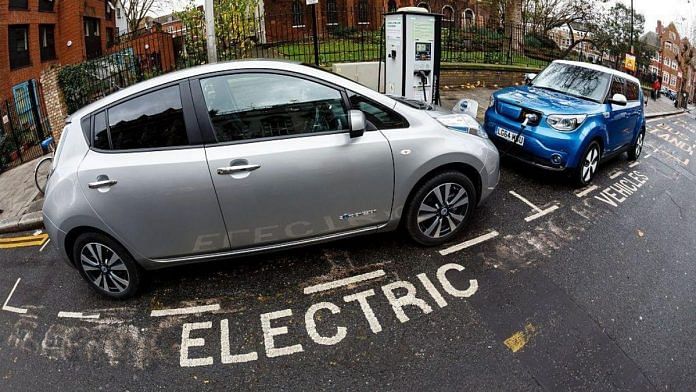The electric vehicle (EV) revolution is underway, demonstrated by recent announcements by both Tata Motors and Ford that they will invest billions in new EV manufacturing. But most scientists agree that to keep global temperature increases below 1.5 degrees Celcius – and avoid climate disasters – we need to go much further than switching to electric vehicles. What is needed is a huge transition from a fossil-energy dominated world to a clean electrified world in the next two decades.
What this means, practically, is that more energy consumption needs to be electrified – either connected to the power grid or with local generation. Cars using petrol, homes heated by natural gas, and industrial processes using fossil fuels must switch to electric alternatives such as electric vehicles, heat pumps, and clean electrified processes.
Currently, the global economy runs on approximately 20% electricity; everything else is powered by fossil fuels. To avoid global temperature increases, according to the Energy Transitions Commission, the integrated energy system of the future must run on 68% direct electricity. Scenarios from the International Energy Agency (IEA), the International Renewable Agency (IRENA) and others show similar requirements: final energy demands must shift from 20% to 50-80% direct electricity by 2050. Practically speaking, that means that within two decades, all cars, buildings and industries must use clean electricity backed by renewable energy sources instead of burning fossil fuels.
Demand: beyond electric vehicles
Along with massive investment in electric vehicles, a similar revolution is needed for the buildings where we live and work, and for heavy industry. Rewiring America, a US-based coalition focused on electrifying everything, has estimated that 42% of all our carbon emissions come from our homes and the vehicles we drive. Electrifying them all is a challenge because energy demand is complex and includes not only billions of cars but also gas furnaces, cooking stoves and other fossil-fuelled appliances that have lifetimes of 10-30 years.
All these need to be replaced at the end of their lifecycle to meet our climate goals. Full electrification means that every appliance that uses fossil fuel must be replaced by a modern electric one upon retirement. These modern electric machines, fortunately, are not only more efficient, but cleaner for the air. Gas stoves must be replaced with induction stove tops, which heat water in half the time. Furnaces and water heaters must be replaced with heat pump technology. Gas dryers should be replaced by electric ones. Our breaker boxes need to be upgraded to handle a higher electrical load.
Globally, industry creates around 25% of total global CO2 emissions, yet many of its processes could be electrified, too. Heating and cooling are major components of industry energy demand, with 91% of heating and cooling supplied by fossil fuels. While electrification does not work for high heat processes, half of heating and cooling demand is below 200°C: these are considered low-temperature processes. This means the machinery behind these processes could be replaced with cost-effective electrification.
Replacing fossil-fuelled machines in industry and the built environment will facilitate the transformation of the economy to widespread electrification. It will also make the overall energy system more efficient. Heat pumps, for instance, use only one-third of the energy of a natural gas furnace. Clean electricity itself eliminates half to two-thirds of energy that is lost as waste heat when using coal or natural gas.
Supply: competing for clean electrification
Even if a massive ramp-up of electrification in industry and buildings were to take place today, there wouldn’t be enough supply of clean electricity. If a medium-sized manufacturing facility were to electrify through existing electrification technologies, it would result in an increase in electricity demand of about 50-100%, or over 3.925 Gwh per year. The electricity infrastructure would need to triple in capacity to meet this demand, backed by expanded sources of renewable energy, primarily solar and wind.
In the EU, a coalition of CEOs from the chemical, cement, transport and energy sectors submitted a request to the European Commission to accelerate the adoption of renewables in Europe, and create a more interconnected network that allows electricity to freely flow between countries to support industrial electrification. Globally, this will require significant investment to build new infrastructure and interconnection, and to deploy smart technology. The IEA calls for $260-820 billion to be invested annually in grid infrastructure.
What is clear is that both the supply and the demand side of our energy use must be transformed. While electric vehicles may have a head start, the electric revolution will have to take over our homes and industries as well. This will not only address climate change, but also create new jobs, and keep our air and oceans clean.
This article was first published in World Economic Forum. Read the original article here.
Also read: Elon Musk’s Tesla are headed to India, but there won’t be any green car revolution here



